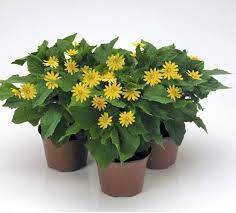
Sunflowers, with their towering stalks and radiant blooms, are not only a sight to behold but also a joy to cultivate in gardens, landscapes, and even containers. Whether you’re a seasoned gardener or a novice enthusiast, learning how to grow and care for sunflowers can be a rewarding experience that yields bountiful blooms and enhances the beauty of your outdoor spaces. In this comprehensive guide, we’ll explore the step-by-step process of planting, nurturing, and harvesting sunflowers, along with essential tips for ensuring their health and vitality throughout the growing season.
**Selecting Sunflower Varieties**
Before embarking on your sunflower-growing journey, it’s important to choose the right varieties for your garden’s specific needs and growing conditions. Sunflowers come in a wide array of sizes, colors, and forms, ranging from dwarf varieties suitable for containers and small spaces to towering giants that make a bold statement in the landscape.
Popular sunflower varieties include:
1. **Common Sunflower (Helianthus annuus):** The classic sunflower variety known for its large, yellow blooms and sturdy stalks. Common sunflowers are versatile and adaptable, making them suitable for a wide range of growing conditions.
2. **Dwarf Sunflowers:** Compact varieties such as ‘Teddy Bear’ and ‘Suntastic Yellow’ are ideal for container gardening or adding splashes of color to borders and flower beds.
3. **Multi-Branched Sunflowers:** Varieties like ‘Italian White’ and ‘Lemon Queen’ produce multiple flower heads on a single plant, extending the bloom time and providing abundant cut flowers for arrangements.
4. **Giant Sunflowers:** If you have ample space and want to make a dramatic impact, consider planting giant sunflower varieties such as ‘Mammoth’ or ‘Russian Giant,’ which can reach heights of 10 feet or more.
**Preparing the Soil**
Sunflowers thrive in well-drained, fertile soil with plenty of sunlight. Before planting, prepare the soil by loosening it to a depth of 12 to 18 inches and incorporating organic matter such as compost or aged manure to improve fertility and soil structure. Avoid planting sunflowers in heavy clay soils, as they prefer lighter, loamy soil that allows for good root development and drainage.
**Planting Sunflower Seeds**
Sunflowers can be directly sown into the garden after the threat of frost has passed and the soil has warmed to a temperature of at least 50°F (10°C). Alternatively, you can start seeds indoors 2 to 4 weeks before the last expected frost date and transplant seedlings outdoors once they have developed sturdy roots and true leaves.
To plant sunflower seeds:
1. Choose a sunny location with well-drained soil.
2. Sow seeds directly into the soil at a depth of 1 to 2 inches, spacing them 6 to 12 inches apart, depending on the variety’s mature size.
3. Water the soil thoroughly after planting to ensure good seed-to-soil contact and encourage germination.
4. Keep the soil consistently moist but not waterlogged until seedlings emerge, usually within 7 to 14 days.
**Caring for Sunflowers**
Once sunflower seedlings have emerged, it’s essential to provide them with proper care to ensure healthy growth and abundant blooms. Here are some key tips for caring for sunflowers throughout the growing season:
1. **Watering:** Sunflowers have deep taproots that allow them to withstand drought conditions, but consistent watering is still essential, especially during hot, dry weather. Water plants deeply once or twice a week, providing 1 to 2 inches of water per week, depending on weather conditions and soil moisture levels.
2. **Fertilizing:** Sunflowers are relatively low-maintenance plants and generally do not require heavy fertilization. However, you can side-dress plants with a balanced fertilizer once or twice during the growing season to promote healthy growth and flowering.
3. **Mulching:** Apply a layer of organic mulch, such as straw or shredded leaves, around sunflower plants to conserve soil moisture, suppress weeds, and regulate soil temperature. Mulching also helps to prevent soil erosion and improve overall soil health.
4. **Supporting Tall Varieties:** Tall sunflower varieties may require support to prevent them from toppling over in windy conditions. Install stakes or trellises near plants and tie stems loosely to provide support as they grow.
5. **Deadheading:** Remove spent flowers regularly to encourage continuous blooming and prevent self-seeding. Deadheading also helps redirect energy into the development of new flower buds and prolongs the overall bloom period.
6. **Pest and Disease Management:** Monitor sunflower plants for signs of pests such as aphids, caterpillars, and slugs, and treat infestations promptly using organic pest control methods if necessary. Additionally, practice good garden hygiene and provide adequate spacing between plants to promote air circulation and reduce the risk of fungal diseases such as powdery mildew.
**Harvesting Sunflowers**
Sunflowers are ready for harvest when the back of the flower heads turn yellow or brown, and the seeds feel firm and plump to the touch. To harvest sunflower seeds:
1. Cut flower heads from the plants using sharp scissors or pruners, leaving several inches of stem attached.
2. Hang flower heads upside down in a warm, dry location with good air circulation to allow them to dry completely.
3. Once dry, gently rub the flower heads to release the seeds, then separate seeds from the chaff using your hands or a sieve.
4. Store sunflower seeds in a cool, dry place in airtight containers until ready to use.
**Conclusion**
Growing and caring for sunflowers is a rewarding experience that allows you to connect with nature’s beauty and vitality. By following these tips and guidelines, you can cultivate thriving sunflower plants that brighten your garden and provide a source of joy and inspiration throughout the growing season. Whether you’re a beginner gardener or a seasoned enthusiast, sunflowers are sure to bring a touch of sunshine to your outdoor spaces and enrich your gardening journey with their vibrant blooms and cheerful presence.









